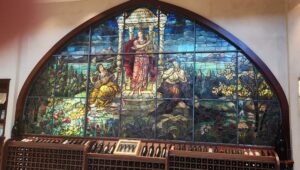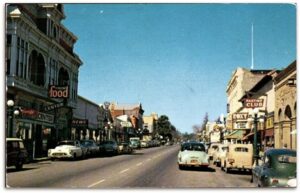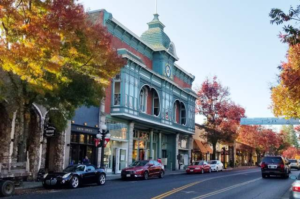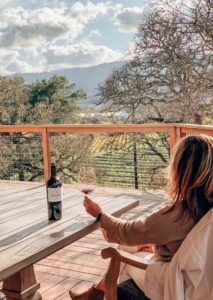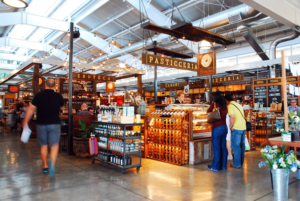We have driven up and down Route 29 in the Napa Valley many, many times. Often, we have passed the Peju Winery (www.peju.com). That’s exactly what we have done, passed it by without stopping in. We guess that’s because we have never seen their wines in stores or on wine lists so, we thought, why bother? On a recent trip, we did bother and we are glad we did.
The rather distinctive Peju winery.
The winery is named after its founder, Tony Peju, who only recently passed away. He was credited with being the father of direct-to-the-consumer wine sales. Thus we hadn’t heard of his wines because he bypassed stores and restaurants. Peju wines are for sale only at the winery and through their wine club. The winery is still owned and run by the Peju family, which is something depressingly rare in Napa Valley today.
The winery is distinctive. As you approach, you see a rather oddly shaped building or, as they prefer to call it, a tower. Surrounding it are lush gardens which visitors are free to roam. There is also a spacious patio where visitors are offered seated tastings. You can also stand at the bar at Peju, which is rather rare these days. We arrived without an appointment and so had our tasting indoors, in the barrel room. However, the winery does urge reservations.
The stained glass mural in the winery.
Peju makes an enormous variety of wines. Of course, not all are available for tasting on any given day, but we did find that the servers were liberal with little extras that weren’t on the official tasting lists. Located in the heart of Napa Valley in Rutherford, they do specialize in the Bordeaux grapes, especially Cabernet Sauvignon. But there are also Malbec, Pinot Noir and Sangiovese in the red wines. Their selection of white wines includes Chardonnay and Sauvignon Blanc (of course), but also sparking wines and French Colombard, a rarity these days. We are usually of the ABC (anything but Chardonnay) persuasion, but we rather enjoyed Peju’s.
The servers seem quite knowledgeable, if a bit chatty. They are attentive, which can be a problem in some wineries. Combining the renewed popularity of wine tasting tourism with a shortage of staff everywhere, we have often found ourselves sitting and waiting for a server to notice that we wanted to be on to our next wine. This was not the case at Peju, much to their credit. For a winery that makes its market with visitors and club members, it is only sensible that they make the tasting experience as enjoyable as possible. It leads to purchases and memberships. We would only wish that more wineries would adopt that attitude.
Our visit to Peju is an example of why it is a good idea, from time to time, to take a chance on a winery you don’t know. We enjoyed our visit, bought some wine, and will gladly return on another trip. The next time we might even make a reservation.

